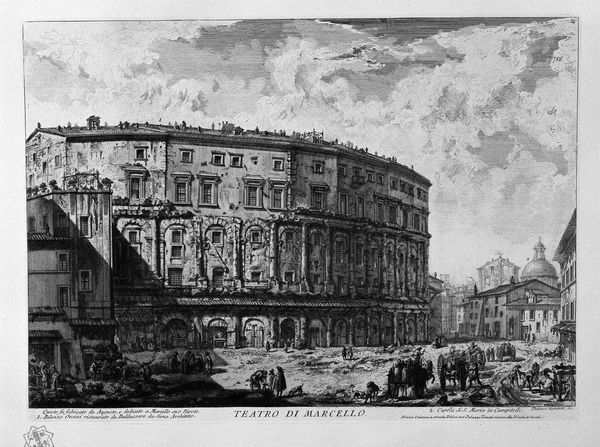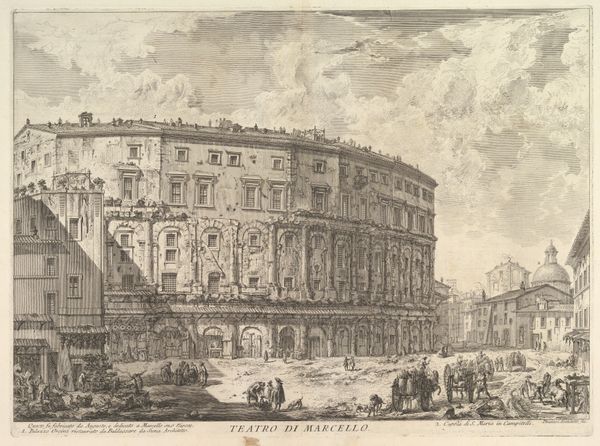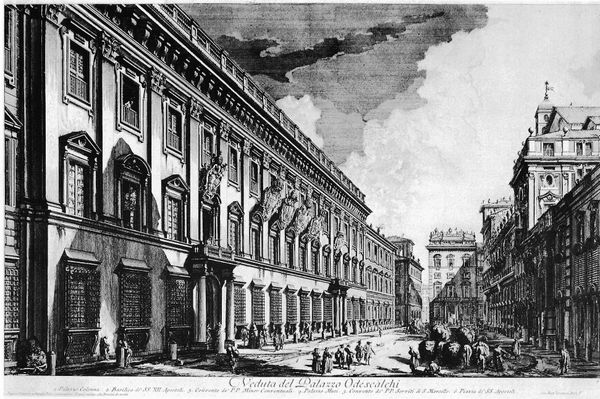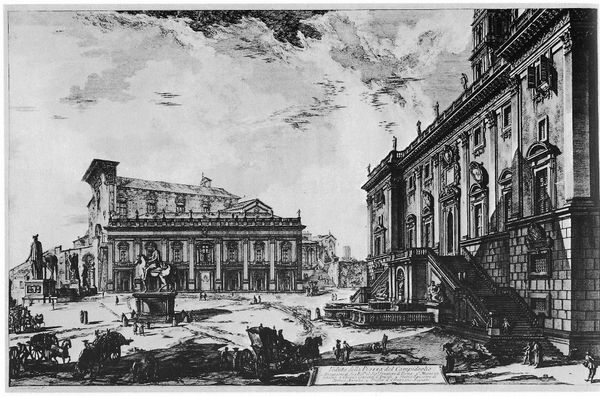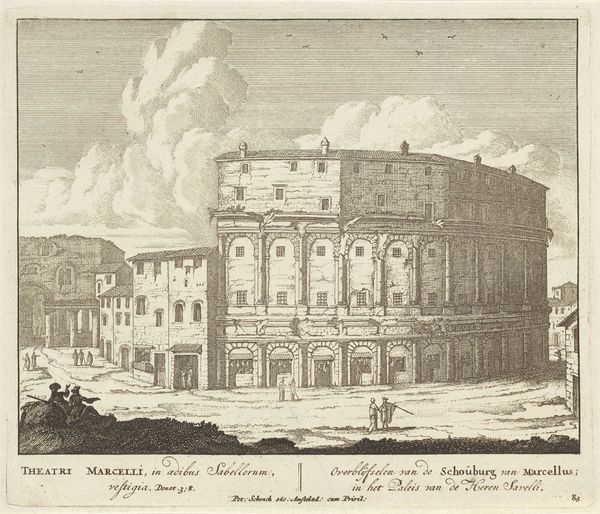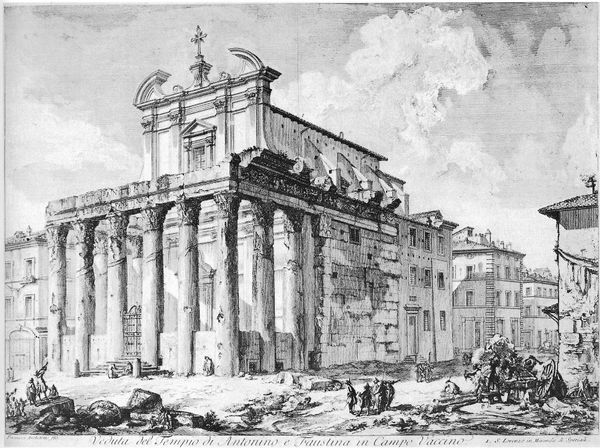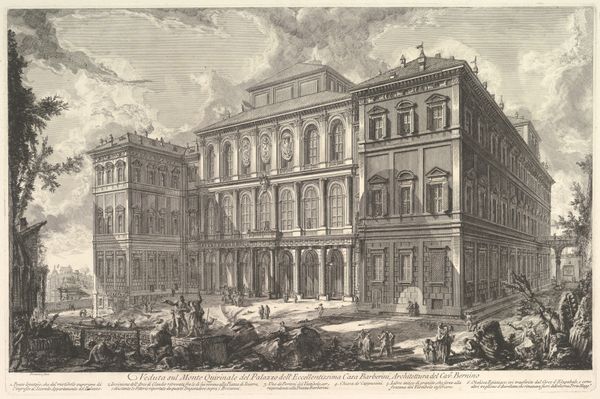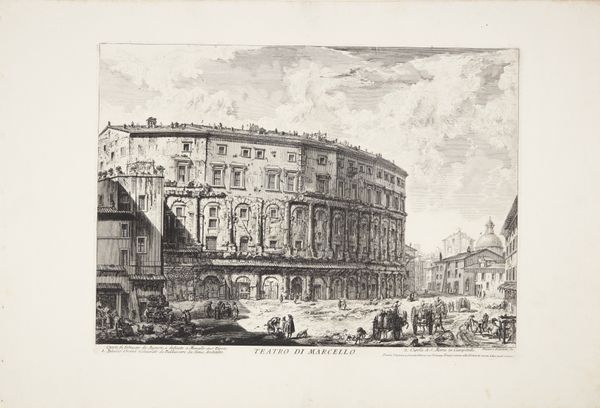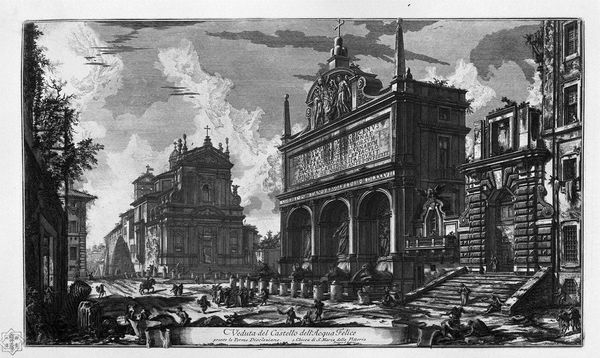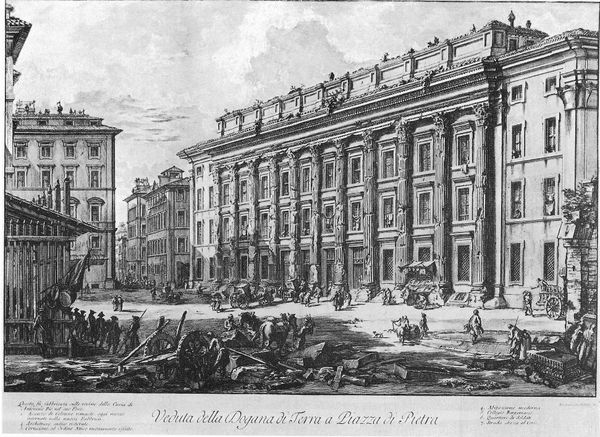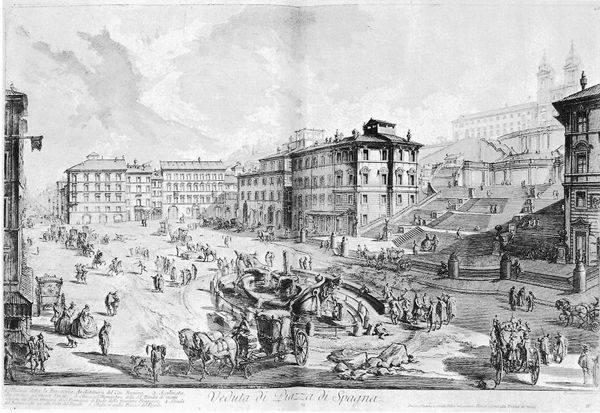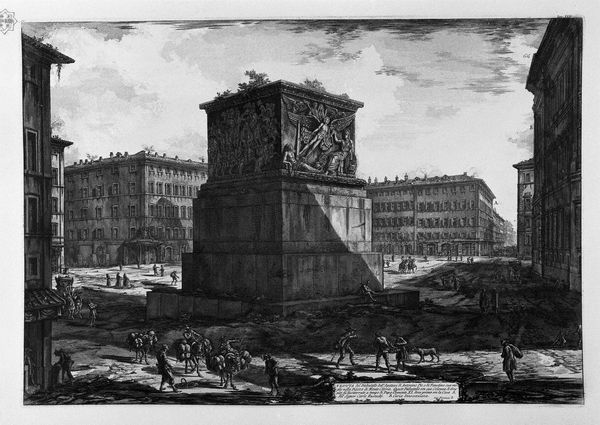
print, etching, engraving, architecture
#
baroque
# print
#
etching
#
sculpture
#
landscape
#
romanesque
#
ancient-mediterranean
#
cityscape
#
italian-renaissance
#
engraving
#
architecture
#
ruin
Copyright: Public domain
Curator: Wow, this print just pulsates with echoes of history, doesn’t it? Editor: Absolutely. This is one of Giovanni Battista Piranesi’s “Vedute di Roma” or Views of Rome. Piranesi was a master of etching and engraving. It captures the Teatro di Marcello, a marvel of Roman architecture, not necessarily at one particular date but within his period of greatest activity during the 18th century. Curator: The mood is incredibly atmospheric, even somber. Look at those looming ruins against the backdrop of that sky – turbulent with the clouds. And then there's the daily life unfolding at the base, a scene filled with its bustling and busy lives. Editor: Precisely! Notice the stark contrast Piranesi creates between the grandiose architecture and the miniature human figures? It’s a clever juxtaposition that accentuates the sheer scale and permanence of the classical past. The theater itself becomes a symbol of both power and decay, doesn't it? An antique power eroded and reclaimed. Curator: I am intrigued by that tension. You’re right, this tension – between past grandeur and the here-and-now ordinary – lends the image its peculiar charge. We feel Rome, and history itself, layered, stratified and as real as an idea. Also what a comment about humans, ephemeral actors against the heavy backdrops of civilizations they built! Editor: Think about what the ruin symbolized in the 18th century, too: a Romantic fascination with the passage of time and a potent reminder of human impermanence. Piranesi's manipulation of light and shadow heightens that sense of melancholy, inviting us to ponder the legacy of empire, doesn’t it? It has strong associations for classical architecture, the value that modernity gives to old cultures. Curator: Agreed, it's a brilliant depiction of memory as a place and an echo, as ruin is transformed from the place to just one more story and vista of its people, in the hands of time. The architecture tells us more than one narrative through his hands. What an insightful window onto Piranesi's view on his Rome. Editor: It leaves me contemplative; the picture, for sure. Here, you've just met “Views of Rome," through the art of symbols in a world on the brink of something really old, through something quite new.
Comments
No comments
Be the first to comment and join the conversation on the ultimate creative platform.
